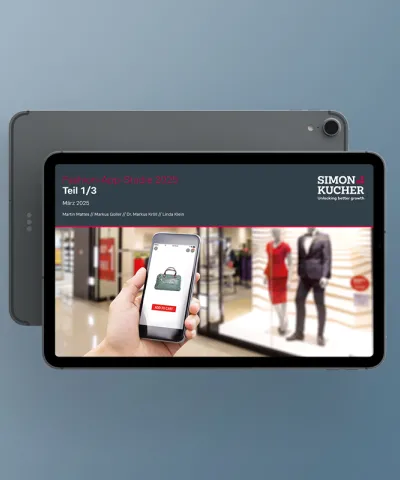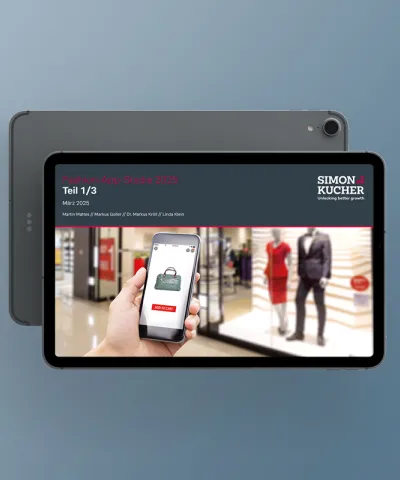What makes an effective retail brand strategy? Why do some retailers thrive while others struggle or disappear? The answer isn’t about the mechanics of just buying and selling with a margin. It’s about how a retailer positions itself in the minds of customers.
Think about it this way: If you don’t define yourself, the market will do it for you, and that’s risky. Without a strong brand identity, it's easy to get lost in the mix. That’s where so many retailers struggle. They aren’t the cheapest, they aren’t the best quality, they don’t have the best experience. They’re just… there. Retail success isn’t just about one lever. You need a comprehensive retail brand strategy. This means orchestrating multiple elements together in a way that makes sense for your brand and the customer:
- Assortment: Do customers find what they need? Are there clear "hero products" and/or “hero categories” that define your brand?
- Promotions: Do they create excitement? Do they reinforce your price image?
- Marketing: Does it bring in the right customers and make your brand feel relevant?
- Execution: Are stores well-organized? Is online shopping seamless? Do checkout and delivery work smoothly?
The retail brand, the pricing, the assortment, the experience, it all needs to fit together.
Target audience: Key to a successful brand strategy
Customer orientation is the foundation of retail brand strategy. Without it, everything else is just guesswork. A retailer that doesn’t deeply understand its target customers is just throwing strategies at the wall and hoping something sticks.
Many fail by trying to be everything to everyone. In contrast, the best retailers build their unique selling proposition (USP) around what their specific customers value the most. If you don’t have a clearly defined target customer, how do you decide on your pricing strategy, assortment, promotions, or shopping experience? If your brand shifts focus too often or dilutes the USP, customers get confused, and you lose your edge.
Think about department stores. They used to be powerhouses, but many have collapsed because they lost sight of their audience (and of course among other things like the digital revolution!). Are they premium? Are they mass-market? Are they for older, wealthier shoppers, or younger, trend-driven ones? Without that clarity, they ended up fading into irrelevance while more focused competitors (like fast fashion brands or specialty stores or ecommerce players) took their customers.
But then there’s the challenge: customer needs evolve. Even strong brands can’t stay stagnant. You must refine your positioning constantly. What was valuable five years ago might not be as relevant today.
Price image is crucial for a strong brand identity
Price isn’t everything, but price image is critical. It’s not about having the lowest prices, but about shaping how customers feel about the prices in the context of your retail brand. A retailer that wins isn’t just competing on price alone, but they also aren’t ignoring pricing either. They’re strategic about how they position their prices in a way that strengthens their brand.

Price image is the foundation that sets off a chain reaction in retail performance. The price image of today is your success of tomorrow! It’s not just about how much something costs—it’s about how customers perceive the pricing in relation to the value they get.
If you have a strong price image, meaning customers believe they’re getting fair or great value, it impacts every step of the customer journey:
- Higher frequency: If customers trust the pricing, they come back more often.
- Better conversion: When they’re in-store or online, they’re more likely to make a purchase rather than just browse.
- Higher sales: More frequent visits + higher conversion = revenue growth.
- Better margins: A good price image means you don’t have to constantly discount just to get sales.
- Greater customer loyalty and repurchase rates: When customers trust your pricing and value, they stick around.
That's why you can’t treat pricing, category management, and price image as separate things. They have to work together to shape how customers perceive value. A lot of retailers don’t connect these dots, and that’s where they go wrong.
- They either focus too much on price without thinking about assortment strategy.
- Or they optimize their assortment without making sure it aligns with their pricing and promotions.
Take grocery stores, for example. If a supermarket wants a strong low-price image but fills its shelves with premium brands and high-margin specialty items, the customer experience doesn’t match the price image. On the flip side, if a high-end store suddenly starts carrying budget brands just to compete on price, it dilutes its premium positioning.
The best retailers curate their assortments to reinforce their pricing and brand message.
Category management also plays a role in how pricing is communicated. If a retailer wants to strengthen its price image, it can do things like anchor certain focus items at attractive prices to make the entire category feel affordable.
Then there’s the promotion strategy. If you run promotions in a way that conflicts with your category pricing, it confuses customers. For example, if a store has “everyday low pricing” but constantly runs deep discounts, it undermines its own credibility. Customers start to wonder if they should ever buy at full price, and suddenly, the base pricing doesn’t feel trustworthy anymore.
A weak price image leads to a downward spiral:
- Retailer loses customer trust in pricing
- Customer shops less often or looks for alternatives
- Retailer tries to compensate with heavy promotions
- Promotions erode margin, making profitability harder
- Retailer can’t invest in brand experience, making things worse
It’s like a domino effect, and it all starts with price image. When pricing, category management, and promotions aren’t aligned, the price image falls apart. But when they work together, they create a coherent value perception that makes customers feel confident in their purchases.
Assortment must signal brand consistency
Assortment is a huge signal of retail brand positioning, directly shaping how customers perceive both value and price image. The depth (how many variations of a product or service you offer) and breadth (how many categories you cover) send strong cues about whether you are premium, mass-market, or discount.
A premium retailer carries a carefully curated selection of high-end brands with fewer choices per category. You’re not going to see 15 different brands of socks. You’ll see a few, but they’ll all fit a high-quality, premium image. That signals exclusivity and reinforces a premium price image.
The message is: we don’t have everything, but what we have is the best. Now take a discount retailer—they do the opposite. They focus on limited but essential choices to create efficiency and perceived savings. A budget supermarket doesn’t give you 20 kinds of peanut butter. It gives you one or two, at the best possible price.
Now take a discount retailer—they do the opposite. They focus on limited but essential choices to create efficiency and perceived savings. A budget supermarket doesn’t give you 20 kinds of peanut butter. It gives you one or two, at the best possible price.
That simplicity reinforces the idea that you don’t need to shop around. "We already chose the best value for you." It also helps keep prices low because the retailer doesn’t have to manage excessive inventory. That’s part of why discounters can afford to have such a strong low-price image without endless promotions.
Another key factor is assortment depth and customer psychology. Too many choices can lead to decision fatigue, making shopping overwhelming. On the flip side, too few choices can make a store feel limited or lacking authority in a category. Smart curation means offering the right mix of hero products, essential items, and differentiators that reinforce your brand's price image.
One emerging strategy is using private labels and exclusive brands to strengthen price image, differentiation, and retail brand awareness. If a retailer offers exclusive, well-designed alternatives to national brands at competitive prices, customers feel like they’re getting “smart value.” This provides a good mix of affordability and quality that aligns with the retailer’s positioning.
Ultimately, assortment isn’t just about what you sell. It’s about what it signals to customers.
Retail is detail: Smart execution builds a strong retail brand
It’s not just about having the right strategy on paper; execution is what separates winners from struggling retailers. Every tiny decision in how your store online and/or offline is structured: assortment curation, shelf placement, the number of SKUs, promotions, even visual elements like the way prices are displayed affects how your brand stands out.
Shelf placement is another hidden force that shapes buying behavior. Customers tend to focus on eye-level products first, so what gets placed there matters. High-margin or focus items should be positioned strategically. Retailers that fail to optimize shelf space may end up with key products buried in less visible locations, reducing conversion rates.
SKU management ties back to operational efficiency. The more SKUs you have, the more complexity you introduce into your supply chain, inventory management, and pricing strategy. Too many SKUs can dilute focus, making it harder for customers to navigate the selection and increasing costs for the retailer. The most successful retailers are intentional about SKU rationalization, keeping only what’s necessary to drive sales, profitability, and price image perception.
Execution also extends to pricing strategy at the shelf level. If price tags are unclear, inconsistent, or frequently changing, customers lose confidence in the price image. That’s why stable, trustworthy pricing signals matter as much as the actual numbers.
Online, the same principles apply. The way products are displayed, the number of choices shown, the recommendation algorithms—all of these digital execution details influence conversion, price perception, and loyalty.
At the end of the day, customers don’t interact with "strategy"—they interact with execution. Even the most brilliant retail strategy can fail if these small, everyday details aren’t optimized.
Short-term wins shouldn’t come at the expense of long-term customer loyalty
Many retailers think they are making strategic moves, but in reality, they are just making a series of short-term, margin-driven, tactical decisions that don’t add up to a coherent long-term strategy. They react to competitive pressure, market shifts, and quarterly performance targets instead of building a positioned, differentiated brand that can sustain success.
Are you falling into these pitfalls?
- Cutting prices or running aggressive promotions to boost sales? If this isn’t aligned with a clear strategy, you could be damaging your long-term price image. Once customers expect deep discounts, they become deal-driven shoppers rather than loyal customers. That’s why brands that rely too heavily on discounts struggle with eroding margins and declining customer trust. They aren’t strategically shaping demand; they’re just reacting to it.
- Suffering from assortment creep? Instead of refining and curating an assortment based on brand positioning, do you keep adding SKUs to chase incremental sales? Then over time, customers no longer see you as a destination for something specific, and operational complexity skyrockets. A truly strategic retailer will optimize its assortment in a way that supports price image and differentiation, rather than just reacting to short-term category performance data.
- Confusing price image signals? Are you sending mixed messages to customers by constantly shifting between discounting and premium pricing? A strong price image isn’t just about pricing itself—it’s about reinforcing value perception through a consistent pricing strategy, promotions, and category management.
- Neglecting category management alignment? Price image, assortment, and promotions must work together. If your pricing strategy says "low-cost leader" but your assortment is filled with high-end, niche products, customers won’t trust your value proposition. Misalignment between these levers leads to customer confusion and lower conversion rates.
Strategic retailers, on the other hand, play the long game. They understand price image, assortment, and brand perception need to be consistent over time, not just adjusted based on quarterly numbers. They balance margin with brand equity, knowing that short-term profit wins shouldn’t come at the expense of long-term customer trust and loyalty.
Make data part of your brand story
Retailers sit on a goldmine of data, but the real question is: Are you using it intelligently? Having data isn’t enough. It’s about translating it into actionable insights that reinforce both the customer relationship and your brand positioning. But many traditional retailers fail in this area:
- Not collecting enough relevant data (or not structuring it well).
- Collecting data but not acting on it in meaningful ways—it just sits in reports instead of shaping decisions.
- Using it in ways that feel impersonal or transactional, rather than building a real relationship with the customer.
At Simon-Kucher, we help you turn data into profit by improving your price image, boosting store traffic, and making every SKU work harder.
- We translate data into clear, actionable strategies that improve price image, promotions, and assortment. Every decision is backed by real insights.
- We help you shift from just discounting to smart pricing and promotions that drive sales while protecting profitability.
- We help you rethink loyalty, not just through discounts but by making customers feel understood through personalized offers and better brand positioning.
- We don’t just offer pricing solutions; we bring a holistic approach: pricing, promotions, category management, and brand positioning all working together.
Need more loyal customers and bigger baskets? Let’s make that happen. Contact our specialists.








